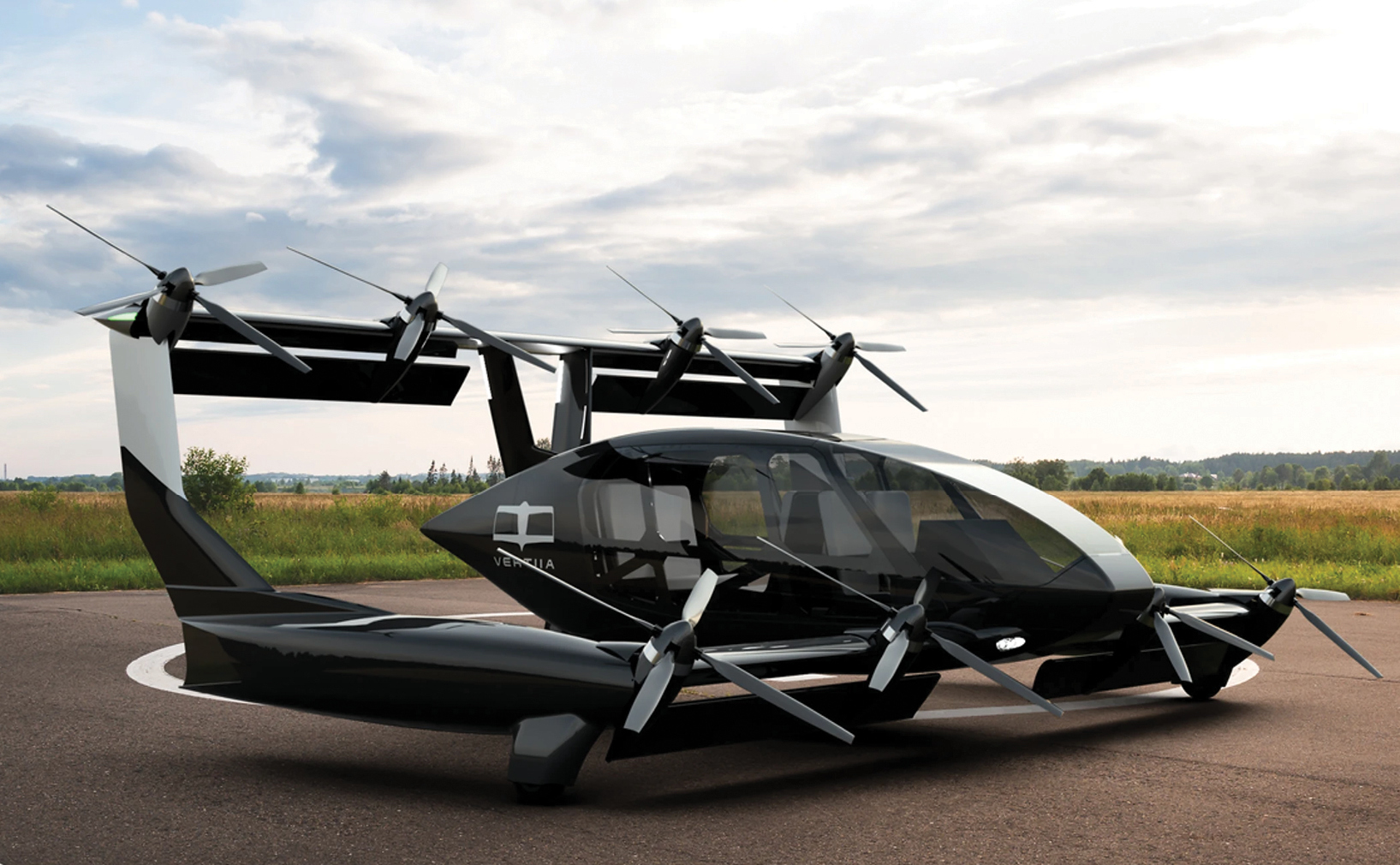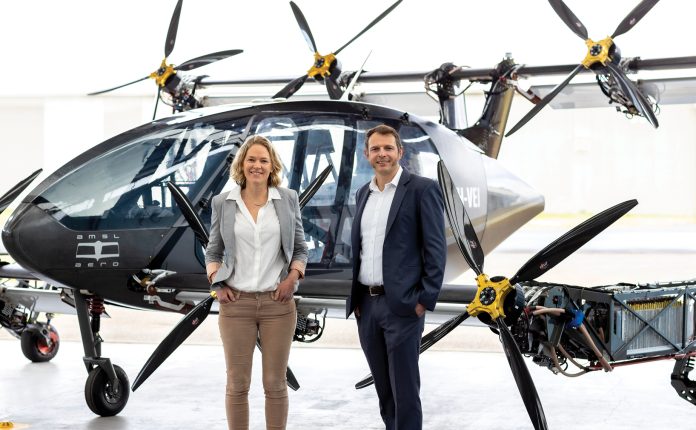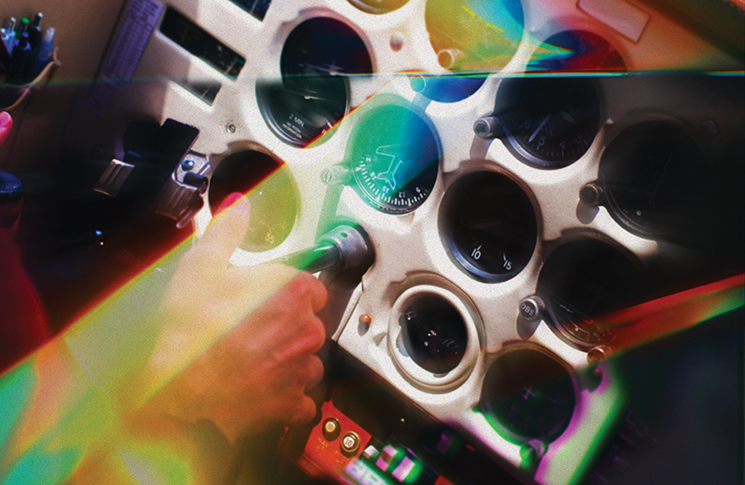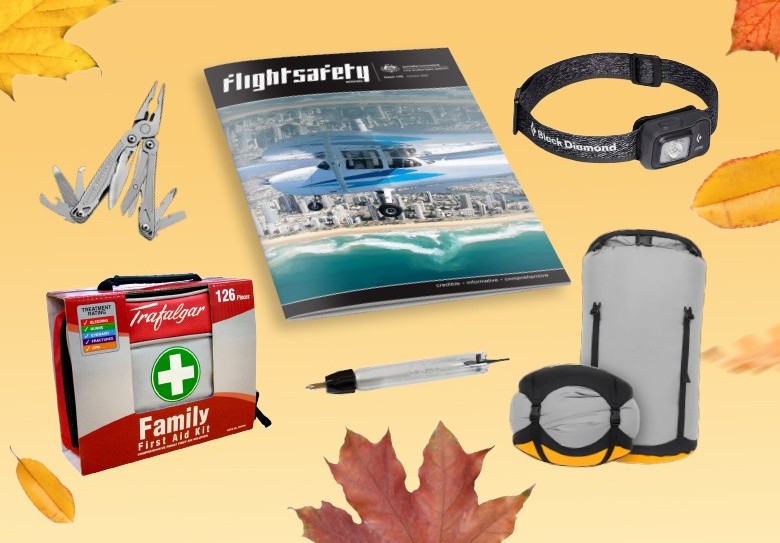The designers of what is planned to be Australia’s first certified advanced air mobility aircraft say technology and safety go hand in hand.
Safety was at the forefront of Andrew Moore’s thinking when he set out to design and build an Australian advanced air mobility (AAM) aircraft.
The aircraft would be in the spotlight as an Australian first and Moore knew a key market in his sights, medical transport, would demand the highest levels of reliability.
At the same time, the electric vertical take-off and landing (eVTOL) vehicle would need to have strong economic and ecological advantages.
It’s a balance Moore believes he has struck in Vertiia, which earlier this year became the first Australian-made AAM aircraft to apply for Civil Aviation Safety Authority type certification.
The eVTOL has been under development for several years by AMSL Aero, the NSW company Moore co-founded with Google executive Siobhan Lyndon.
Some of the key design objectives are to be able to accommodate 5 people with a range of 1,000 km using a hydrogen fuel cell to power its 8 electric engines and a cruise speed of 300 km/h (160 kt).
Although the aircraft has been pitched initially at the medical transport market – particularly in rural, regional and remote Australia – there are also air taxi, cargo and other emergency service possibilities.
The Vertiia is part of a new breed of aircraft aiming for zero operational carbon emissions and a smaller noise footprint compared to conventional aircraft.
But the longer-range capability provided by the hydrogen fuel cell sets it apart from some of the shorter-range, battery-only eVTOL aircraft being developed overseas.
Moore sees this as a game changer for operators flying into remote areas and looking for the flexibility of landing without a runway.
‘What we’re developing is an aircraft that can be used as a light air ambulance, as a passenger-carrying aircraft and as a cargo aircraft,’ Moore says.
‘And a key part of what we’re trying to do is help solve the challenges that we see across Australia, which are dealing with the tyranny of distance and making air transport, which is the safest form of transport, accessible and available to everybody.
‘We want to enable a step change in the connectivity of the regions.’
In terms of safety, Moore is looking at the kind of fly-by-wire concepts normally associated with airliners, including triple redundancy.
He says there will be no single points of failure in any of the systems and structure will be ‘highly damage tolerant.’
‘We’re trying to raise the bar even higher on safety by using a digital flight control system,’ he says.
‘This means we can really reduce pilot workload and reduce the chances of pilot error.
‘We can incorporate safety systems that are common today on much larger aircraft.
‘Where we end up is very similar levels of safety to that seen in large airliners because of the systems and the need for triple redundancy through a whole range of systems.’
Safety is also a factor in flight tests, with the first flight of its prototype tethered and operated remotely.
The Vertiia is part of a new breed of aircraft aiming for zero operational carbon emissions.
‘Remote testing decreases the risk to our flight test crew but it increases the complexity of the testing,’ Moore says. ‘That’s OK but it means we have to do a lot of work on the remote testing front and on the approvals and risk assessment process with CASA.’
The company has received backing from both the capital market and governments. Most recently, it received a $5.43 million grant from the Australian Renewable Energy Agency to demonstrate the feasibility of hydrogen as a fuel.
Interest in the company has allowed it to grow and by the end of 2023, AMSL employed more than 50 people as it worked on advancing the flight test development program.
It also recently appointed Royal Australian Navy veteran and former GE Australia boss Max York, who headed GE Aviation’s commercial activities in the Asia-Pacific for 15 years, as its new chief executive.
The overwhelmingly local project also helps put Australia on the global AAM map.
‘We’re not just importing things from overseas. The vast majority of the hard work is being done in Australia,’ Moore says.
‘So all of our digital flight control system is being made locally, all of our electronic motor controllers are being made in Australia and our battery packs.
‘It’s a really good story for Australian industry. Obviously, our composite structures work is all in Australia.’
The company has started the long road to type certification and will need to provide the hard evidence that Vertiia can achieve the appropriate levels of reliability and safety.
Even for a new aircraft based on existing technology, the type certification process is a multi-year journey and there are often unexpected twists and turns.

As a clean-sheet AAM using an advanced power source, Vertiia will be undiscovered country for both AMSL and CASA.
AMSL faces an exhaustive review of data accompanied by extensive ground and flight testing as it demonstrates compliance to agreed airworthiness requirements and, potentially, new regulations.
Vertiia’s fly-by-wire systems, electric motors, new propellers and innovative airframe mean it is by no means a simple aircraft.
The individual components are complicated in their own right but they will also need to be considered as part of the entire aircraft.
And because the aircraft has characteristics of both a helicopter and a fixed-wing aircraft, there will be requirements that cover both configurations.
CASA Manager Aircraft Certification, Klaus Schwerdtfeger, says nothing will be straightforward or ‘out of the box’ in terms of certification requirements.
‘This is very exciting, but it’s daunting,’ says Schwerdtfeger. ‘It’s going to be extremely challenging. Nobody’s done this in Australia ever and in that sense, it will be breaking new ground. We’re going to need new skills to support this project.’
The most recent aircraft certified by CASA were the GA 8 and the GA 10 Airvans – conventional fixed-wing aircraft. By comparison, Schwerdtfeger says Vertiia ‘is off the chart in terms of complexity and use of new technologies.’
‘Where we end up is very similar levels of safety to that seen in large airliners.’
Where possible, CASA will draw on experience gained by other national aviation authorities (NAAs) such as the US Federal Aviation Administration and the European Union Aviation Safety Agency. Both are currently certifying AAMs and are ahead of Australia in many respects.
‘As much as we can, we try not to be first movers,’ Schwerdtfeger notes. ‘Where appropriate, we quickly adopt or adapt certification standards and guidance material of other NAAs and apply them to Australian-designed aircraft.’ This approach assists with the validation of Australian-certified aircraft by other NAAs, opening up a potential global market for the Australian original equipment manufacturer.
Still early in the development phase is the hydrogen fuel cell technology, which has also attracted interest from Australian carriers Regional Express and Skytrans.
The technology has attracted global interest from airlines, engine makers, airframe manufacturers and start-ups but as yet has no firm airworthiness certification basis.
Test flights of experimental demonstrator aircraft have been made by US-based Universal Hydrogen, Germany’s H2Fly and Britain’s ZeroAvia, including a Dash-8 turboprop equipped with the largest fuel cell ever to power an aircraft.
In Australia, Melbourne’s Swinburne University of Technology late last year (2023) successfully completed the first flight of an Australian-developed electric vertical take-off and landing drone powered by a hydrogen fuel.
The university described the flight as a significant milestone in a project designed to position Australian aerospace and aviation companies to scale up hydrogen use.
Federal Energy Minister Chris Bowen also predicted a green energy hydrogen industry will be up and running in Australia by the end of the decade and has labelled the fuel source and other sustainable aviation fuels as ‘vital to help decarbonise the hard-to-abate aviation sector.’
A key issue for safety authorities such as CASA is reskilling staff to assess and certify the new technology and attracting workers with new skills in what is likely to be a competitive environment.
‘It’s a new world for us and while we’re doing that, we still have the conventional aircraft certification work as well,’ Schwerdtfeger says.
‘That hasn’t dropped off – we still have aircraft that are sometimes 60 years old that people continue to modify or repair and we still support certification of those design changes.’
The overwhelmingly local project also helps put Australia on the global AAM map.





